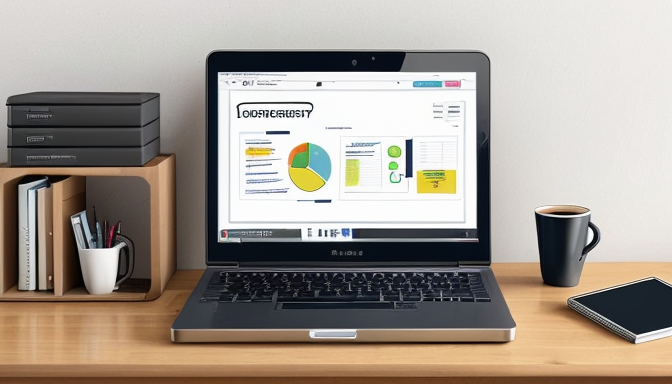When it comes to building a website, Joomla is a powerful tool, but it’s easy to trip over common pitfalls if you’re not careful. One of the first things to understand is the structural elements that make up Joomla: components, modules, plugins, templates, and the MVC (Model-View-Controller) pattern. Each of these plays a crucial role in how your site functions, and overlooking any of them can lead to significant issues.
For instance, components are the backbone of your site, handling the bulk of your content and functionality. If you fail to choose the right components or neglect to update them, you might find your site running slower than molasses on a winter day. Similarly, modules, which are like the icing on the cake, can enhance your site but can also clutter it if not organized properly. Imagine trying to enjoy a delicious dessert while dodging sprinkles flying everywhere!
Plugins add extra functionality, but be cautious: too many can bog down your site. Think of plugins like adding toppings to a pizza; too many can overwhelm the base flavor. Templates, on the other hand, dictate your site’s look and feel. If you pick a poorly coded template, it can lead to a disjointed user experience, making visitors leave faster than you can say “bounce rate.”
To avoid these architectural blunders, always ensure that you’re familiar with the MVC pattern, which helps separate your site’s logic from its presentation. This separation not only makes your site easier to manage but also enhances performance. So, dive deep into Joomla’s architecture, and you’ll be well on your way to creating a stunning and efficient website!
Understanding Joomla’s Framework
When it comes to building a website, understanding the framework you’re working with is crucial. Joomla is no exception. It’s like the backbone of your site, holding everything together and ensuring that it runs smoothly. At its core, Joomla is built on a robust architecture that includes key structural elements: components, modules, plugins, templates, and the MVC pattern.
Let’s break these down a bit. Components are essentially the heart of your Joomla site; they handle the main functionality and output. Think of them as the engines that drive your website’s features. Modules, on the other hand, are like the accessories that enhance the user experience. They can display anything from menus to advertisements and can be positioned in various areas of your site.
Plugins are the unsung heroes of Joomla. They extend the functionality of components and modules, allowing for additional features without altering the core code. Templates define the look and feel of your site, controlling layout and design. It’s like choosing the paint and décor for your home—important for first impressions!
Finally, the MVC (Model-View-Controller) pattern is the framework’s backbone, ensuring that your site is organized and efficient. It separates the logic of your application into three interconnected components, making it easier to manage and scale. By grasping these elements, you can avoid common architectural mistakes that could hinder your site’s performance and usability.

Best Practices for Joomla Development
When diving into Joomla development, understanding its structural elements is crucial to avoid common pitfalls. Joomla is built on a robust framework that includes components, modules, plugins, templates, and follows the MVC (Model-View-Controller) pattern. Each of these elements plays a significant role in the overall functionality and user experience of your site.
First off, let’s talk about components. These are the building blocks of your Joomla site, handling the main functionalities. Ensure that your components are well-structured and optimized for performance. If you’re creating a custom component, keep in mind the importance of following the MVC pattern to maintain a clean separation of logic, presentation, and data.
Next, modules are like the icing on the cake; they enhance your site’s functionality and appearance. Use them wisely! Position your modules effectively to improve user engagement and navigation. Remember, a cluttered site can confuse visitors and drive them away.
Plugins are your hidden heroes. They extend Joomla’s capabilities without altering the core code. However, be cautious—too many plugins can slow down your site. Always evaluate the necessity of each plugin you install.
Finally, templates set the visual tone of your site. Choose responsive templates that not only look good but also perform well across devices. A well-designed template can significantly enhance the user experience, keeping visitors coming back for more.
By adhering to these best practices, you can create a Joomla site that is not only efficient but also enjoyable for your users. Remember, a well-structured site is like a well-oiled machine; it runs smoothly and keeps everyone happy!
Frequently Asked Questions
- What are the common mistakes in Joomla architecture?
Common mistakes include improper use of extensions, neglecting SEO practices, and failing to optimize site performance. These pitfalls can lead to a sluggish site and poor user experience.
- How can I improve my Joomla site’s performance?
To enhance performance, consider optimizing images, using caching, and minimizing the number of extensions. Regularly updating Joomla and its components also plays a crucial role in maintaining efficiency.
- Is it necessary to follow best practices for Joomla development?
Absolutely! Following best practices ensures that your site is secure, user-friendly, and scalable, which ultimately leads to better engagement and retention.
- Can I fix architectural mistakes after my site is live?
Yes, while it’s best to avoid mistakes from the start, many can be corrected post-launch. However, it may require additional time and resources to implement changes effectively.
- What resources are available for learning Joomla development?
There are numerous resources available, including the official Joomla documentation, online courses, and community forums where you can ask questions and share knowledge.